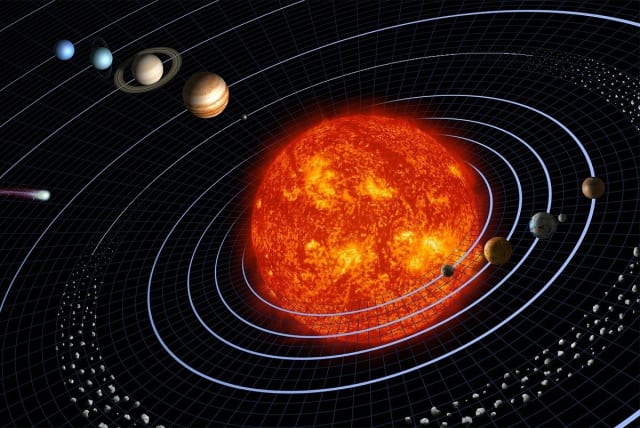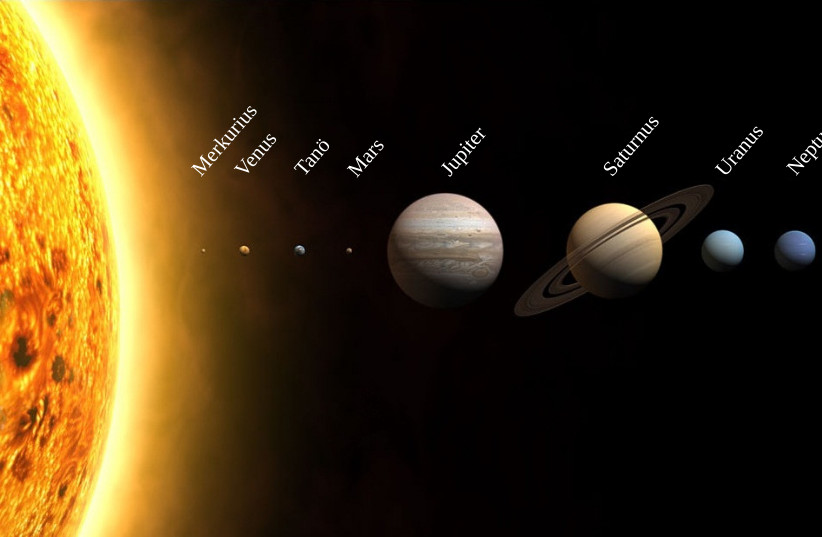A planet between Mars and Jupiter could wipe out Earth - study

“Despite many astronomers having wished for this extra planet, it’s a good thing we don’t have it,” said lead author Stephen Kane.
A planet between Mars and Jupiter could push Earth out of the solar system and wipe out all life on it, according to the findings of a new experiment.
The experiment was conducted by researchers at the University of California, Riverside and the results were published in a peer-reviewed study in the Planetary Science Journal on Tuesday.
Lead author Stephen Kane, an astrophysicist at UC Riverside, said that the experiment was aimed at filling in two gaps in planetary science.
Gap in size between terrestrial planets and giant gas planets
One of these is the gap in size between terrestrial planets and giant gas planets. The smallest gas giant is Neptune, which is four times wider and 17 times more massive than Earth, the largest terrestrial planet in the solar system, and there is nothing in between.
“In other star systems there are many planets with masses in that gap. We call them super-Earths,” said Kane.
Gap in location relative to the sun between Mars and Jupiter
The other gap is the location between Mars and Jupiter relative to the sun.
“The architecture of the solar system's planetary orbits exhibits a substantial gap between the orbits of Mars and Jupiter, populated by a vast reservoir of asteroids,” the study noted. “These features of the solar system architecture provide compelling evidence of past interactions, and numerous challenges remain for solar system formation models.”
“Planetary scientists often wish there was something in between those two planets. It seems like wasted real estate,” Kane said.
The gaps could shed light on the evolution of Earth and the architecture of the solar system.
In order to fill in the gaps, Kane ran dynamic computer simulations of a planet between Mars and Jupiter with numerous different masses and observed the effects of the planet on the orbits of the other planets in the solar system.
“This fictional planet gives a nudge to Jupiter that is just enough to destabilize everything else,” Kane said. “Despite many astronomers having wished for this extra planet, it’s a good thing we don’t have it.”
As Jupiter is larger than all the other planets in the solar system combines and its mass is 318 times that of Earth its gravitational pull is powerful enough that if a super-Earth or any other celestial object disturbed it, it would have a major impact on all the other planets. The presence of this object could eject Mercury, Venus and Earth from the solar system and destabilize the orbits of Uranus and Neptune, ultimately ejecting them into outer space as well.
Additionally, the super-Earth would change the shape of Earth's orbit, making it much less habitable if not wiping out all life completely.
However, Kane found that if he reduced the super-Earth's mass and put it directly between Mars and Jupiter, it was possible for the planet to remain stable for an extended period of time, unless it was moved slightly in any direction.
“This work presents a positive aspect of the lack of a local super-Earth, in demonstrating the potential for orbital instability that such an additional planetary mass may induce,” the study read.
“Our solar system is more finely tuned than I appreciated before. It all works like intricate clock gears. Throw more gears into the mix and it all breaks,” Kane added.
Jerusalem Post Store
`; document.getElementById("linkPremium").innerHTML = cont; var divWithLink = document.getElementById("premium-link"); if (divWithLink !== null && divWithLink !== 'undefined') { divWithLink.style.border = "solid 1px #cb0f3e"; divWithLink.style.textAlign = "center"; divWithLink.style.marginBottom = "15px"; divWithLink.style.marginTop = "15px"; divWithLink.style.width = "100%"; divWithLink.style.backgroundColor = "#122952"; divWithLink.style.color = "#ffffff"; divWithLink.style.lineHeight = "1.5"; } } (function (v, i) { });

